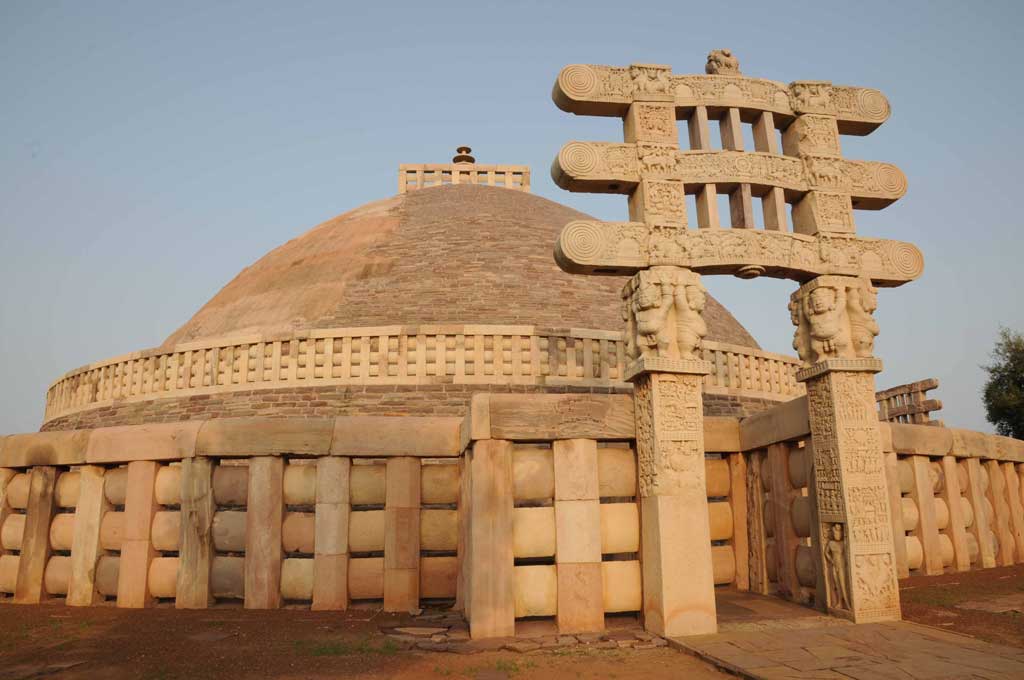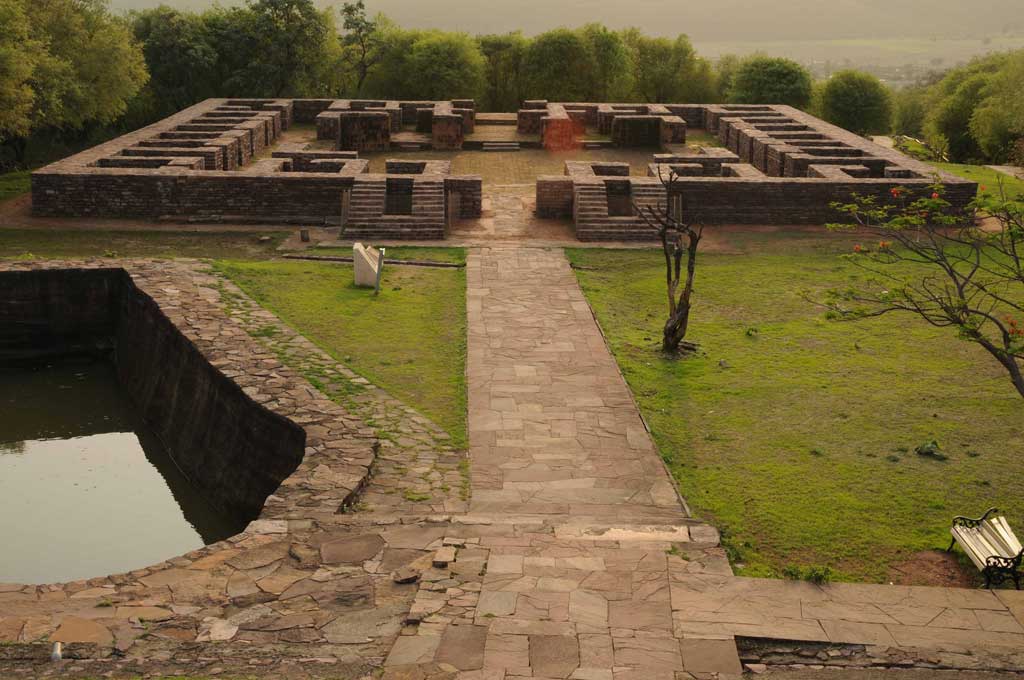Outstanding Universal Value
Unique in India because of its age and quality, the group of Buddhist stupas, temples and monasteries at Sanchi
(variously known as Kakanaya, Kakanava, Kakanadabota and Bota Sri Parvata in ancient times) is one of the
oldest Buddhist sanctuary in existence. These monuments record the genesis and efflorescence of Buddhist art
and architecture over a period of 1,300 years from the 3rd century BC to the 12th century CE, thereby spanning
almost the entire classical Buddhist period in India. Surprisingly, Sanchi was not hallowed by any incident in
Buddha's life. The only early reference to Sanchi occurs in the chronicle of Sri Lanka, Mahavamsa and Dipavamsa
(c. 3rd-4th century CE). Sanchi was discovered in 1818 after being abandoned for nearly 600 years, and
gradually the archaeological site was explored, excavated and conserved.
The religious establishment at Sanchi was founded by the Mauryan emperor Asoka (c. 272-237 BC). Here, he built
a Maha Stupa and erected a monolithic pillar and a monastery atop the hill at the insistence of his queen, who
was from Vidisha, located 10 km from Sanchi. With its serene environment and seclusion, Sanchi ensured a proper
atmosphere for meditation and fulfilled all the conditions required for an ideal Buddhist monastic life.
Several edifices were raised at Sanchi and its surrounding hills during the Sunga times. The Asokan Stupa was
enlarged and covered with stone veneering, and balustrades along with a staircase and harmika were added. The
reconstruction of Temple 40 and the erection of Stupa 2 and Stupa 3 also appear to date to about the same
period. In the 1st century BC, the Andhra-Satavahanas, who had extended their influence over eastern Malwa,
created the elaborately carved gateways to Stupa 1. From the 2nd to 4th centuries CE, Sanchi and Vidisha were
under the Kushanas and Kshatrapas and were subsequently passed on to the Guptas. A number of temples were built
and sculptures added at Sanchi and Udayagiri, near Vidisha, during this period. Shrines and monasteries were
also constructed at this site during the 7th and 10th centuries CE.
The rich decorative art associated with this architecture was also utilised on the toranas (gateways), where
prodigious, lush carvings in bas-relief, high-relief and in the round constitute a treasure trove of
iconographic depictions. The theme of the decorative work centres on the former lives (Jataka) of Buddha and on
events from life of the Master. The fresh and charming representation of plants, animals and human beings, the
narrative quality of the stories and the creativity apparent in the sculpted capitals and cornices combine to
make this site an unrivalled masterpiece of early Buddhist art as well as a milestone in the development of art
that integrates indigenous and non-indigenous influences.








